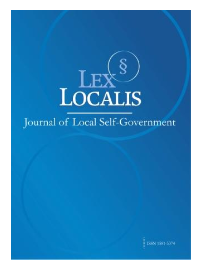COUPLING COORDINATION DEGREE ANALYSIS OF SPATIAL RESTRUCTURING AND REGIONAL DEVELOPMENT: AN INTEGRATED APPROACH TO MOROCCO'S ADVANCED REGIONALIZATION
DOI:
https://doi.org/10.52152/71q12s62Keywords:
Coupling coordination degree; Spatial restructuring; Regional development; Morocco; Advanced regionalization.Abstract
This article analyses the relation between spatial restructuring and spatial development, in the context of progressing regionalization of concept relations 2017-2022 in Morocco. First, a coupling coordination degree (CCD) model develops two new compound indexes, or a regional development index (RDI) and a spatial restructuring index (SRI), whereby structural maximum rate of identity entropy weights are selected. Local spatial structure and spatial type of marriage, using the index of dispersion Clark and Evans (1954) in determining spatial development impact on the spatial type of marriage. Results reveal strong heterogeneity amongst the twelve regions or Morocco, again implying that spatial structure is an important factor in determining intensity coordination.
Development-structure consistency is higher in areas that are more aggregated and lower in dispersed areas with structural bottlenecks as space becomes congested. The study contributes to the literature by extending the application of CCD framework in Africa, integrating spatial structure analysis, and developing policy-relevant implications regarding territorial governance and regional convergence alternatives.
Downloads
Published
Issue
Section
License
Copyright (c) 2025 Lex localis - Journal of Local Self-Government

This work is licensed under a Creative Commons Attribution-NonCommercial-NoDerivatives 4.0 International License.








